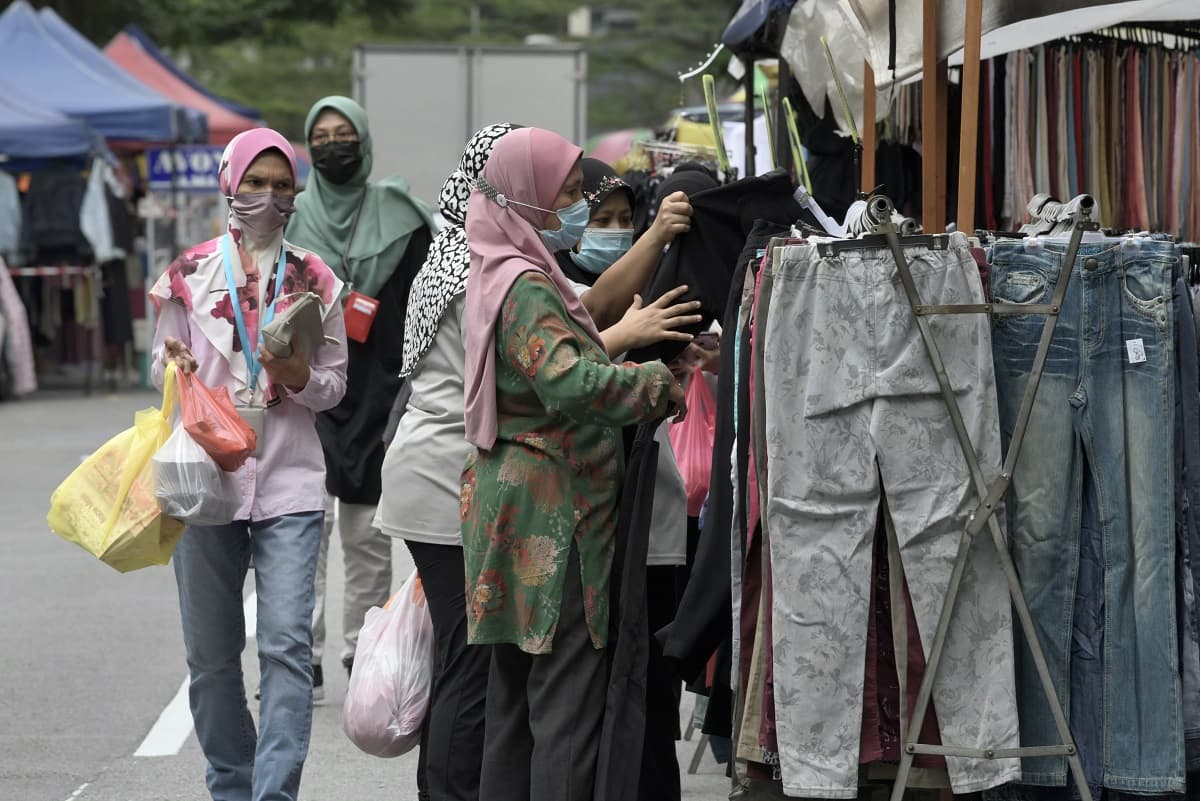
KUALA LUMPUR (May 25): The purchasing power of Malaysia's household consumption fell by 16.7% over a decade to 83.3% in 2020, according to Malaysia's chief statistician Datuk Seri Mohd Uzir Mahidin.
Within 12 main groups, two groups of goods and services recorded purchasing power exceeding 100%, namely communication (102.6%) and clothing and footwear (107%).
"This illustrates that households were able to enjoy communication services, clothing and footwear at cheaper prices as compared to 10 years ago," he said in a statement released by the Department of Statistics Malaysia (DOSM) today.
He noted that inflation in urban areas had outpaced rural areas by 3.4 index points in 2020 to 120.7 points versus 117.3 points.
The purchasing power in urban areas decreased by 17.1%, more than the 14.7% decline in rural areas, he said.
"The main groups that recorded lower purchasing power in urban areas were Health (20.1%), Restaurants & Hotels (25.3%), Food & Beverages (27.0%) and Alcoholic Beverages & Tobacco (39.8%).
“These groups also contributed to the lower purchasing power in rural areas at 16.9%, 20.1%, 21.6% and 42.7% respectively,” he added.
According to Uzir, the negative inflation of 1.2% in 2020 indirectly reflected the effects of the pandemic.
The most affected group was transport (-10%), followed by housing, water, electricity, gas and other fuels (-1.7%), and clothing and footwear (-0.8%).
However, groups that recorded higher inflation were miscellaneous goods and services (2.7%), followed by food and beverages (1.3%) and communication (1.1%).
Notably, food and beverages saw the lowest inflation in a decade. In contrast, the highest inflation during the period was 4.8% in 2011.
“The index for all states decreased between negative 0.6% to negative 1.9% in 2020 as compared to 2019. The highest decrease was recorded by Melaka (-1.9%) followed by Sabah & Wilayah Persekutuan Labuan (-1.9%), Kedah & Perlis (-1.8%) and Sarawak (-1.8%),” said the DOSM.
“As we know, households in Malaysia spend mostly on fresh fish and seafood. Over a decade, inflation for the subgroup fresh fish was volatile with the highest inflation recorded in 2012 (7.7%), while the lowest was in 2020 (0.1%). Meanwhile, fresh seafood also recorded a volatile inflation rate with the highest inflation in 2013 (8.9%) and the lowest in 2020 (2.2%).
“The lack of import supply, Movement Control Order (MCO) as well as unusual heavy rain [were] among the factors that influenced the fluctuation of price in the local market. This analysis was supported by average price of 100 selected items for the period of 2018 to 2020. For example, the average price of black pomfret (1kg) at RM26.49 (2018) and increased to RM26.97 (2020), beef local (1kg) at RM31.69 (2018) increased to RM32.19 (2020) and fresh cuttlefish 10-12cm (1kg) with RM24.12 (2018) to RM26.35 (2020),” he said.
Uzir noted that last year, households across the world spent more money on food and basic necessities.
The Food Price Index Report of the United Nations Food and Agriculture Organization (FAO) rose 2.2% to 107.5 in December 2020, compared with the previous month. On a yearly basis, the index rose 3.1% from December 2019.
The index rose due to higher price of dairy products and vegetable oils.
“During the period 2011 until 2020, Malaysia's inflation was heavily influenced by inflation of essential group. In 2020, the decline in essential group inflation (-1.9%) will be more significant than the overall inflation (-1.2%)," the statement said.
The findings were released under the Analysis of Annual Consumer Price Index 2020.

